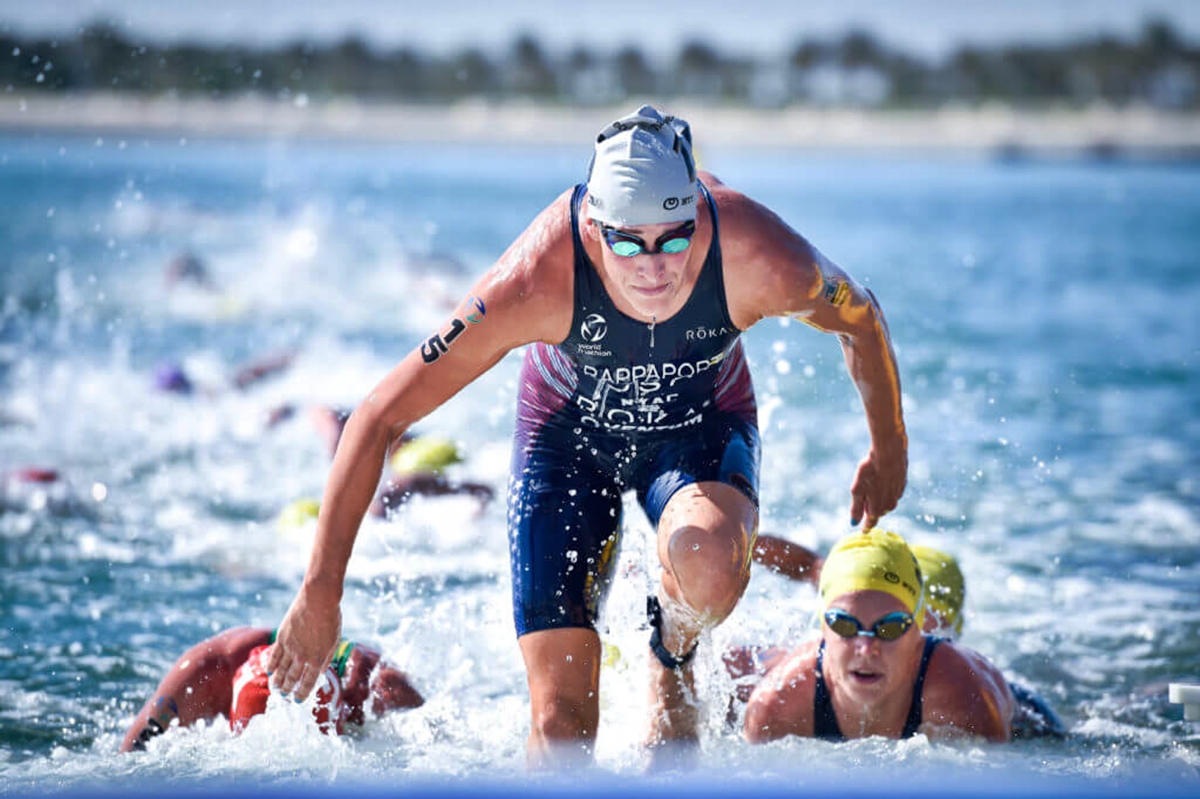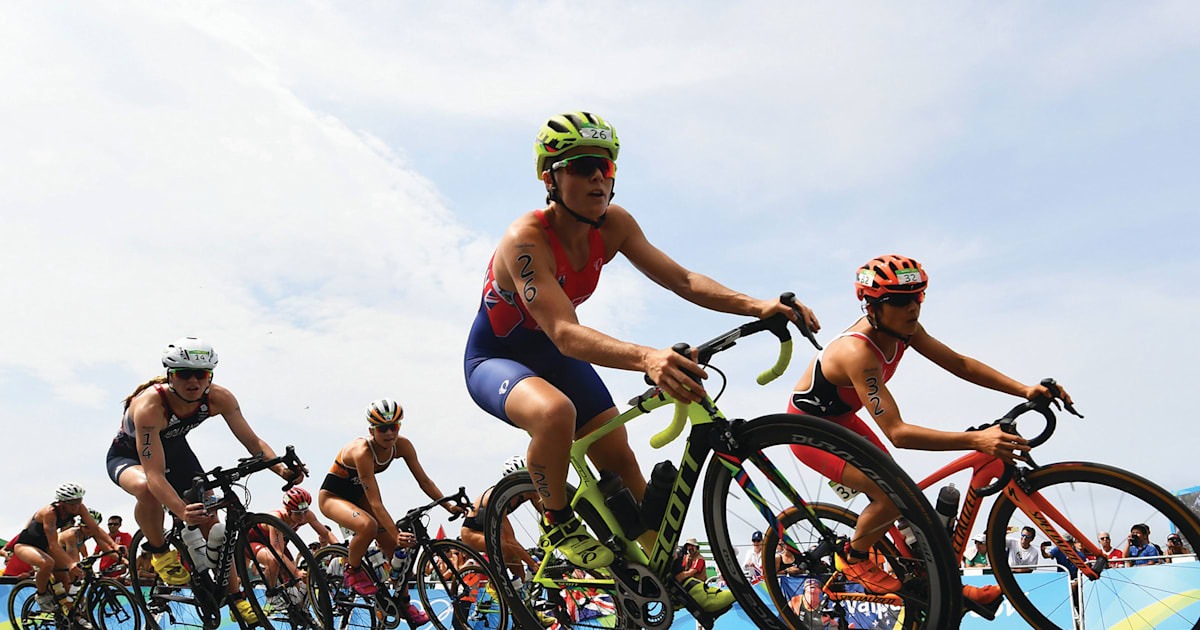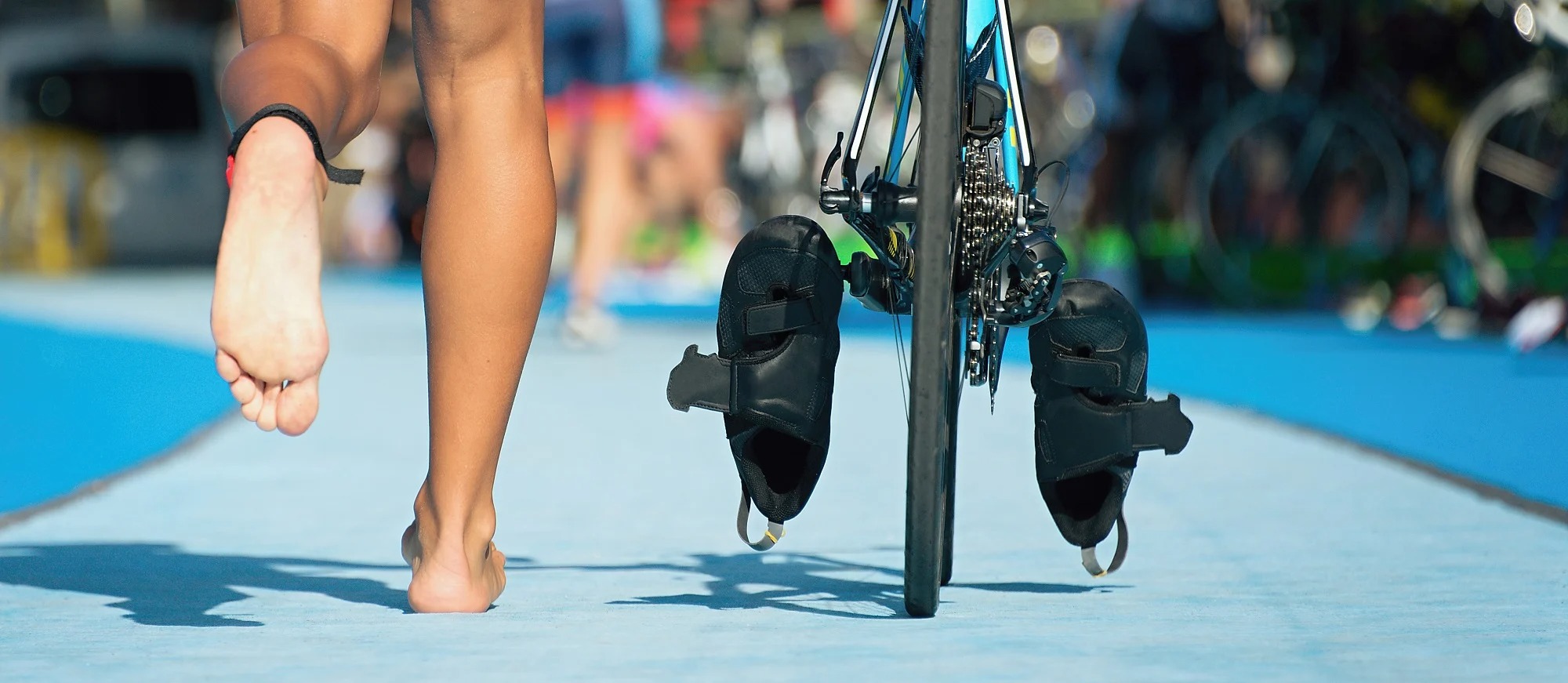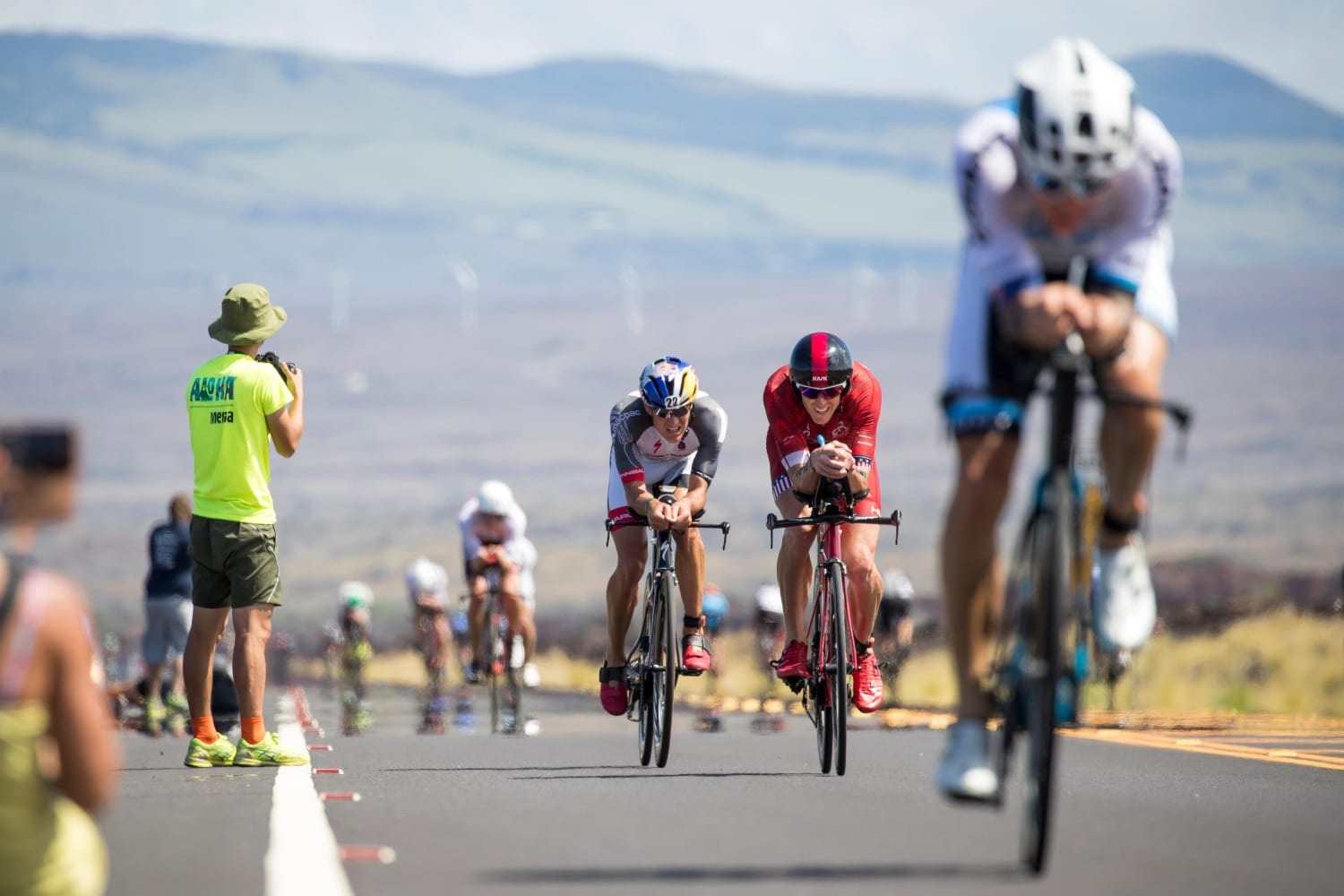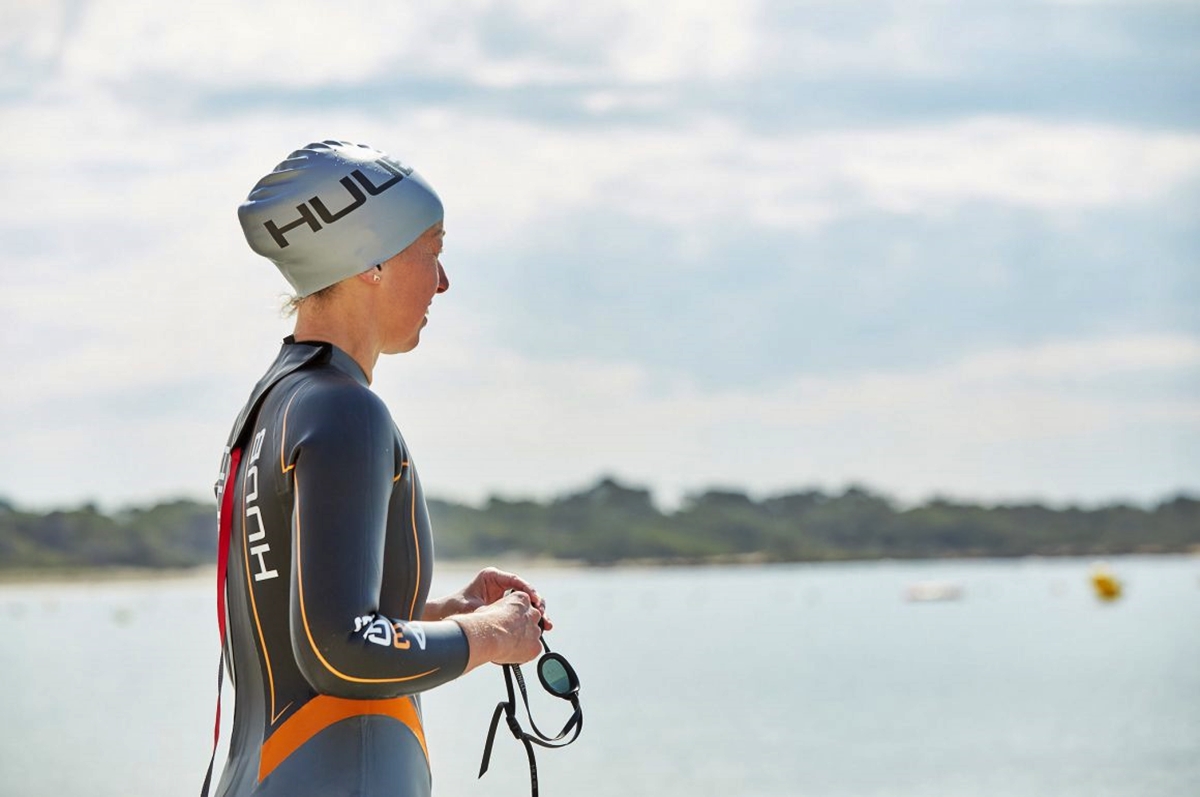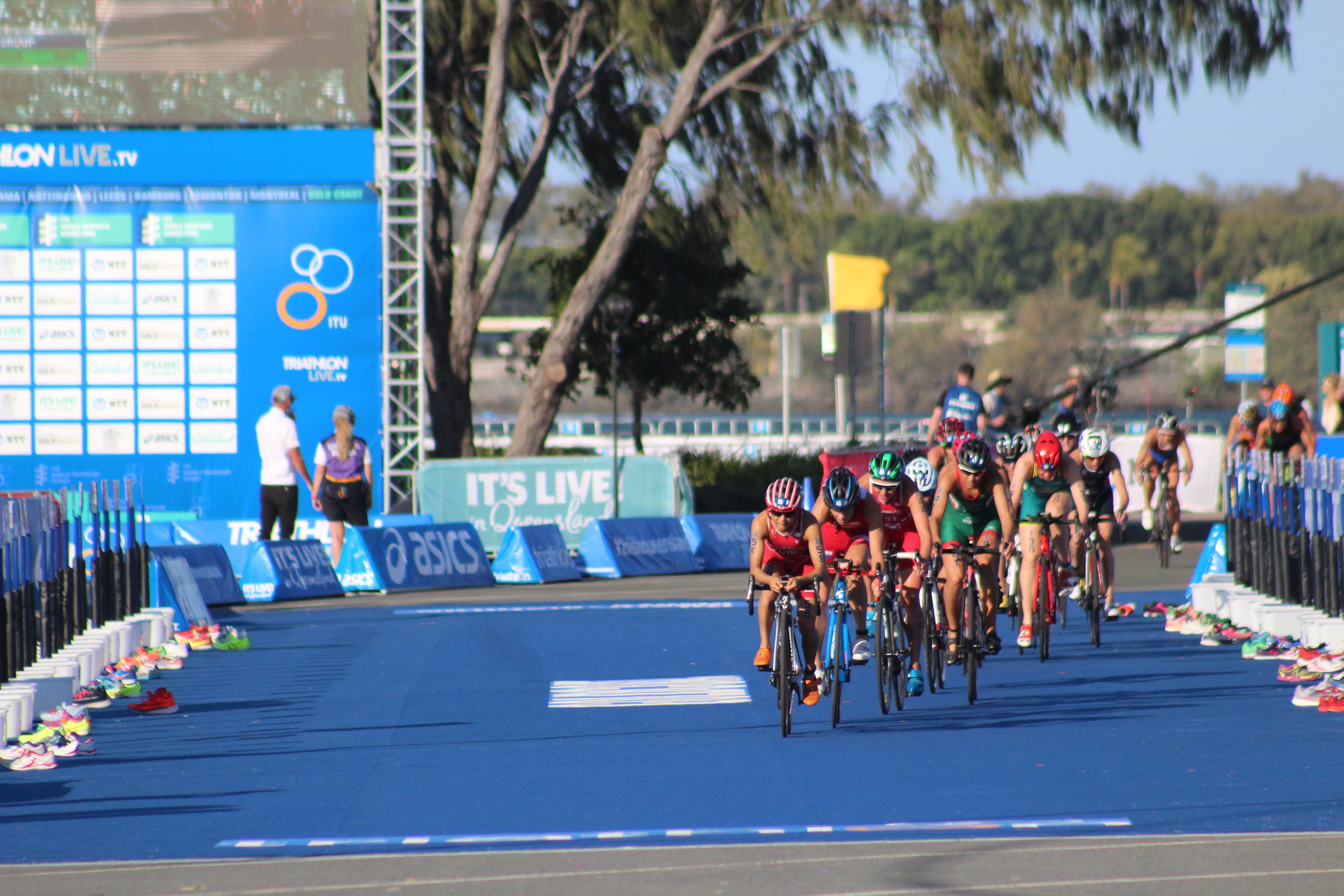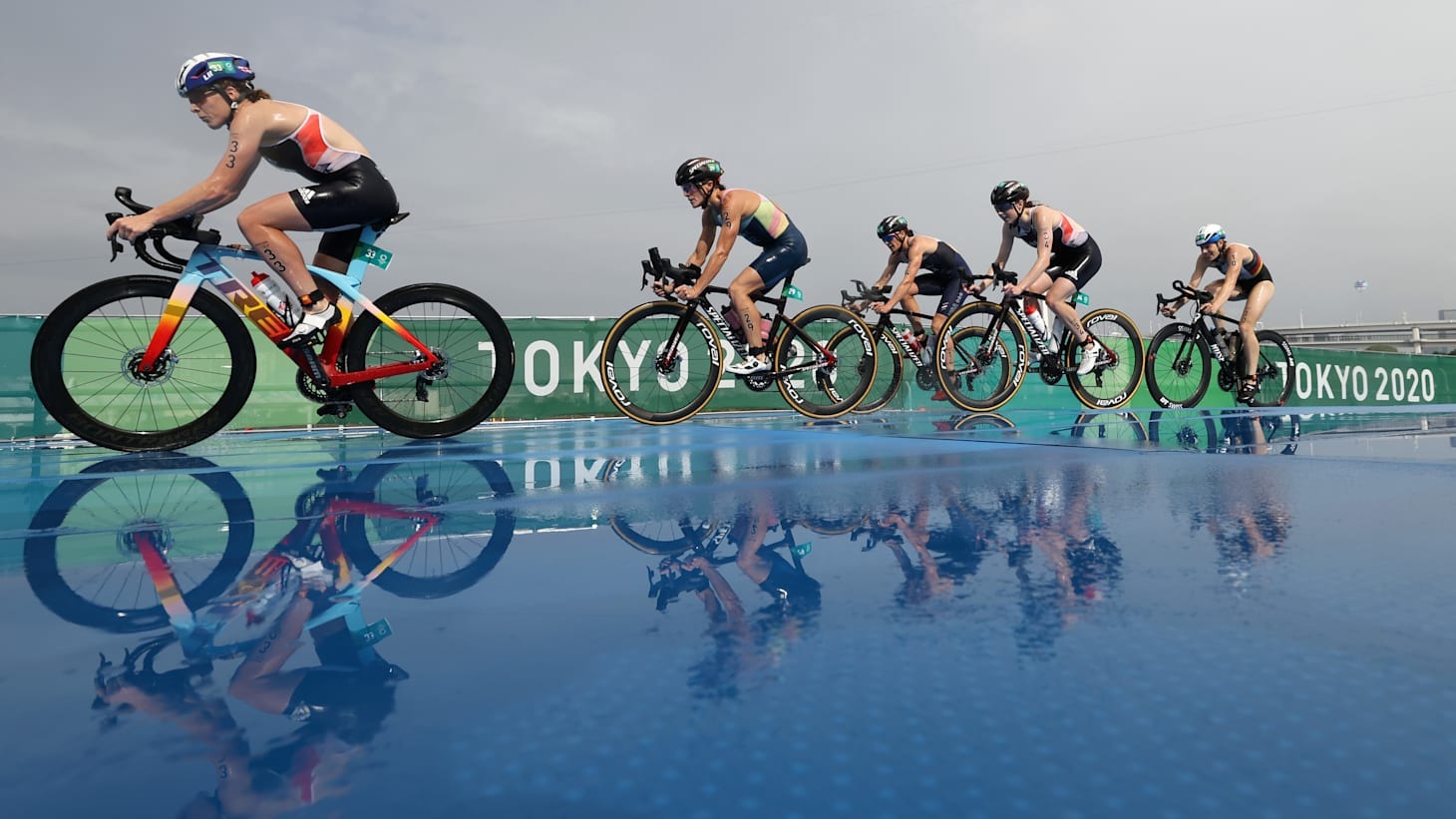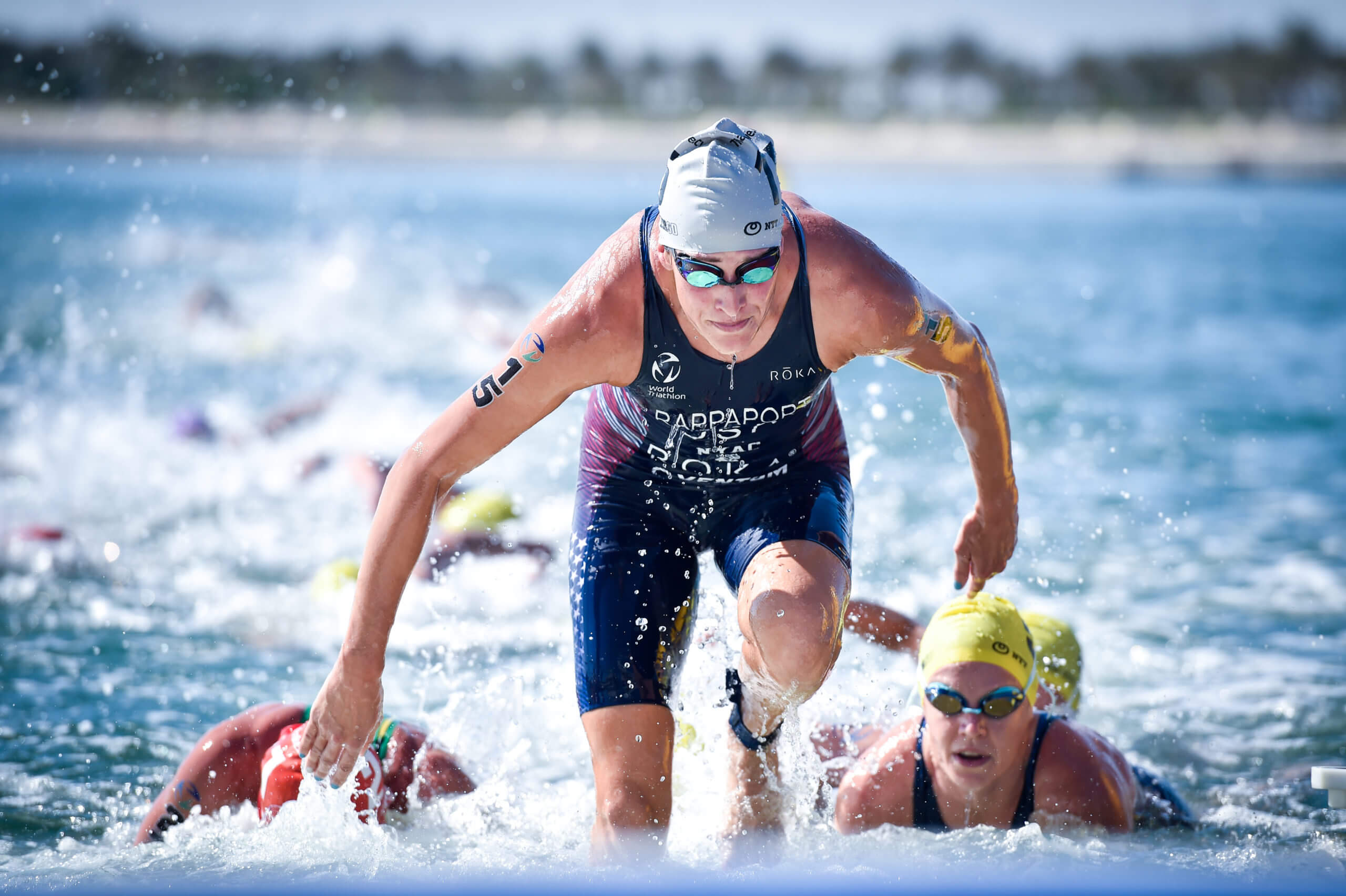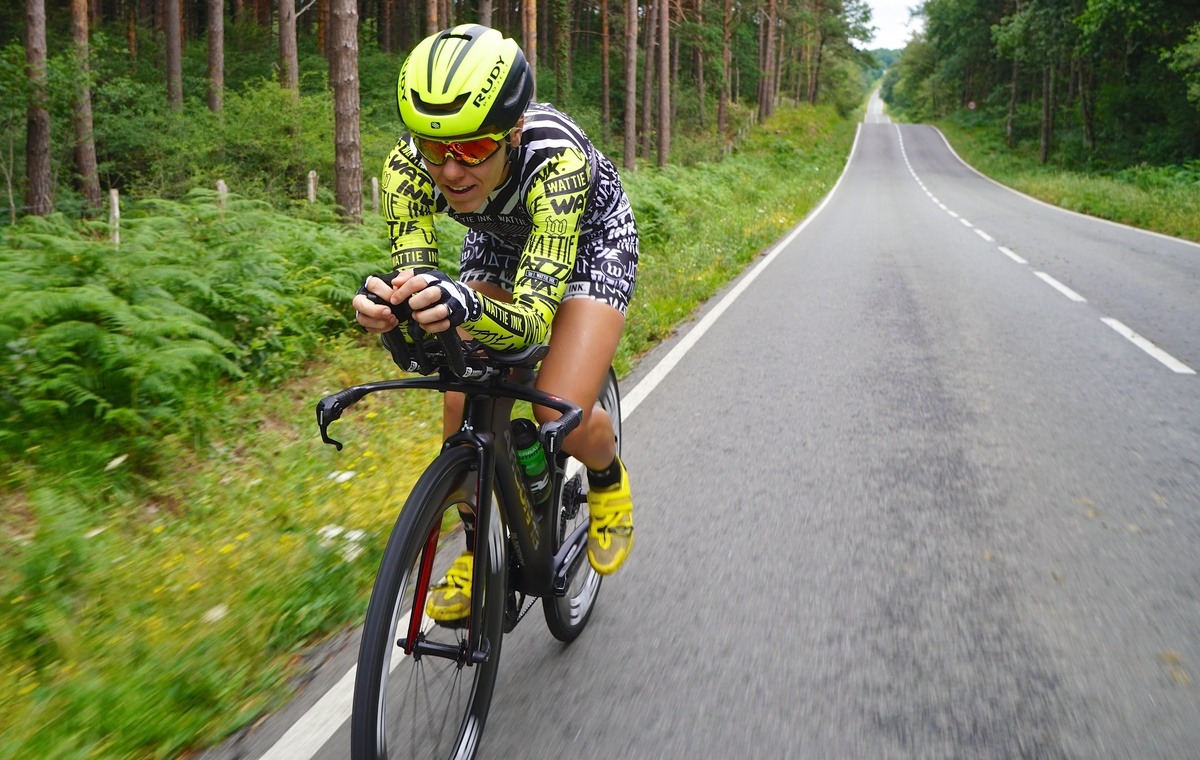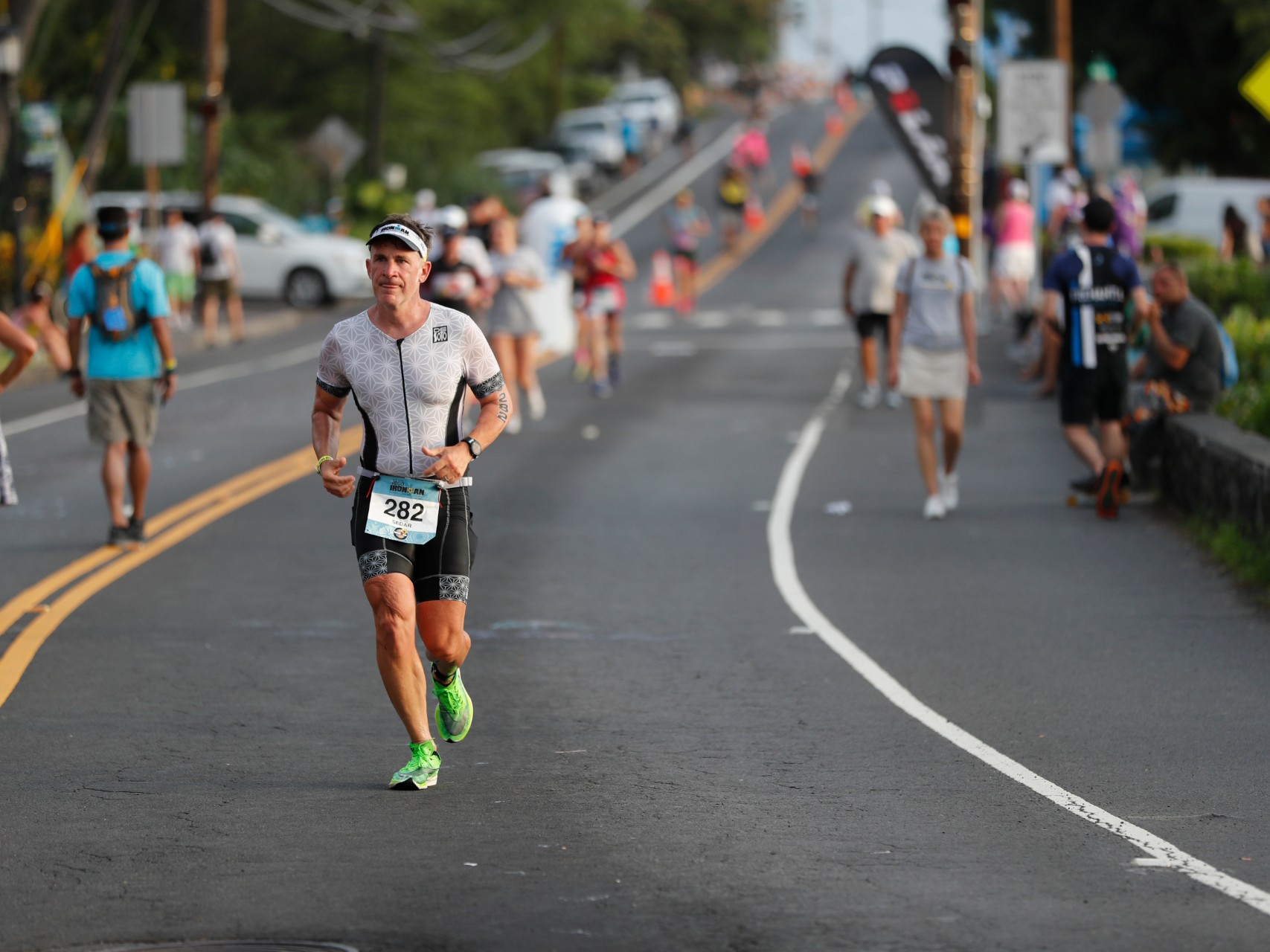

Featured
What Is An Ironman Triathlon
Modified: January 2, 2024
Discover the incredible challenge of an Ironman Triathlon, featured as the ultimate test of endurance, combining swimming, cycling, and running in one demanding race.
Introduction
An Ironman Triathlon is not just another race; it is a test of endurance, strength, and mental fortitude. It pushes athletes to their limits and challenges them to go beyond what they thought was possible. For those unfamiliar with the world of triathlons, an Ironman may seem like an insurmountable feat. However, with proper training, dedication, and a strong mindset, anyone can conquer the Ironman Triathlon.
So, what exactly is an Ironman Triathlon? It is a long-distance race that consists of three consecutive stages: swimming, cycling, and running. Participants must complete a 2.4-mile (3.86 km) swim, followed by a 112-mile (180.25 km) bike ride, and finish with a full marathon, which is 26.2 miles (42.2 km). The race is all about pushing physical and mental boundaries, and it requires months, if not years, of grueling training to prepare for the event.
The history of the Ironman Triathlon dates back to 1978 when it was first held on the island of Oahu in Hawaii. The race was conceived as a challenge between a group of military officers to determine who possessed the best overall endurance. The event gained popularity, and today, the Ironman Triathlon is recognized as one of the most prestigious endurance races in the world.
Completing an Ironman Triathlon is not for the faint of heart. Training for this race requires a significant investment of time, energy, and resources. Athletes must follow a comprehensive training plan that includes swimming, cycling, and running workouts of increasing intensity and distance. The goal is to build endurance, increase strength, and improve overall fitness to be ready for the demands of race day.
In addition to physical preparation, mental toughness is crucial when it comes to conquering an Ironman. The race is a true test of mental fortitude, as athletes face challenges such as fatigue, pain, and doubt. It is essential for competitors to develop mental strategies to stay focused, overcome obstacles, and maintain a positive mindset throughout the grueling journey.
Famous Ironman Triathlons take place around the world, attracting elite athletes, as well as amateurs looking to challenge themselves. These races offer breathtaking routes in stunning locations, providing athletes with an unforgettable experience. Events such as the Ironman World Championship held in Kona, Hawaii, and the Ironman European Championship in Frankfurt, Germany, draw participants from all corners of the globe.
Whether you are already an experienced triathlete or someone looking for a new and exciting challenge, completing an Ironman Triathlon can be a life-changing experience. It requires dedication, perseverance, and a willingness to push beyond your limits. With the right training, mindset, and determination, you can cross the finish line of an Ironman Triathlon and prove to yourself that anything is possible.
What is an Ironman Triathlon?
An Ironman Triathlon is a grueling endurance race that combines three disciplines: swimming, cycling, and running. It is considered one of the toughest single-day sporting events in the world. Participants must complete a 2.4-mile (3.86 km) swim, followed by a 112-mile (180.25 km) bike ride, and finish with a full marathon – a 26.2-mile (42.2 km) run. This ultimate test of physical and mental endurance attracts athletes from all walks of life, from seasoned professionals to first-time triathletes.
The race gets its name from a now-famous origins story. In 1978, a group of military officers in Hawaii decided to settle an ongoing debate: who had better endurance – swimmers, cyclists, or runners? They came up with a challenge that combined all three disciplines, and the Ironman Triathlon was born. The race has since grown in popularity and has become a symbol of human determination and resilience.
Ironman Triathlons are held in various locations around the world, each offering its own unique course and challenges. The most well-known event is the Ironman World Championship, held annually in Kona, Hawaii. This race attracts the best triathletes from around the globe who must first qualify through regional Ironman events. The Ironman World Championship has become legendary, with its challenging course and intense weather conditions, including strong winds and scorching heat.
Participating in an Ironman Triathlon requires months of training and preparation. Athletes must not only develop their endurance, strength, and speed but also master the transitions between each discipline. Training schedules often consist of multiple workouts per day, with a focus on building cardiovascular fitness, muscular strength, and mental toughness. The swim leg requires technical skill, open water proficiency, and the ability to navigate through crowds. The bike leg demands both physical power and strategic pacing, as participants tackle hilly terrain or battle strong crosswinds. Finally, the marathon run is a true testament to mental resilience, as athletes push through fatigue and pain to complete the race.
Ironman Triathlons are not just about the physical challenges; they also involve mental and emotional fortitude. The race requires discipline, focus, and determination to push through the highs and lows that inevitably arise during the competition. The ability to stay positive, overcome obstacles, and dig deep when the going gets tough is what separates finishers from those who do not complete the race.
Completing an Ironman Triathlon is a transformational experience. It pushes individuals beyond their limits and helps them discover their true potential. The sense of accomplishment and the sheer joy of crossing the finish line after enduring hours of physical and mental exertion is truly extraordinary. It is a moment that remains etched in the memory and brings a deep sense of pride for the remarkable achievement.
The History of Ironman
The history of the Ironman Triathlon can be traced back to the late 1970s when a group of Navy SEALS and athletes gathered on the shores of Waikiki Beach in Honolulu, Hawaii. They were brought together by a question that ignited a competitive spirit within them: Who among them was the fittest – swimmers, cyclists, or runners?
In 1978, Commander John Collins, his wife Judy Collins, and their friends gathered for what would become the first-ever Ironman Triathlon. The race consisted of three existing endurance events in Hawaii: the Waikiki Roughwater Swim, the Around-Oahu Bike Race, and the Honolulu Marathon. They decided to combine these events into a single race to determine who could complete all three disciplines back-to-back.
The inaugural event took place on February 18, 1978, with a field of 15 participants. The race began with a 2.4-mile (3.86 km) swim in the waters off Waikiki Beach, followed by a 112-mile (180.25 km) bike ride around the island of Oahu, and capped off with a full marathon – a 26.2-mile (42.2 km) run from Waikiki to downtown Honolulu.
Gordon Haller, a US Navy Communications Specialist, emerged as the winner and the first-ever Ironman, completing the course in 11 hours, 46 minutes, and 58 seconds. John Dunbar, a US Navy SEAL, finished second, and the only woman contestant, Lyn Lemaire, made history by becoming the first female Ironman finisher.
The race gained popularity over the years, and in 1981, the Ironman Triathlon moved to the island of Hawaii, specifically the city of Kailua-Kona, which has remained its iconic home ever since. The event started to attract international attention, and participants from around the world began flocking to the Big Island to take part in the Ironman World Championship.
The Ironman World Championship became the pinnacle of the sport, drawing the best triathletes to compete for the title of Ironman World Champion. The race gained further notoriety as it became the backdrop for incredible athletic achievements and inspiring stories of triumph, pushing the boundaries of human endurance.
Over time, the Ironman brand expanded beyond the original Kona race. Today, there are numerous Ironman races in different countries around the world, allowing athletes to qualify for the Ironman World Championship and pursue their dreams of becoming an Ironman.
The history of Ironman is a testament to the indomitable human spirit – an enduring legacy that continues to inspire individuals to push their limits and strive for greatness. The race embodies the essence of endurance, perseverance, and the unwavering belief that ordinary individuals can achieve extraordinary feats.
The Components of an Ironman Triathlon
An Ironman Triathlon consists of three main components: swimming, cycling, and running. Each discipline presents its own set of challenges and requires specific training and skills. These components come together to create a demanding and thrilling race that showcases the endurance and determination of athletes.
The first component of an Ironman Triathlon is the swimming leg. Participants must complete a 2.4-mile (3.86 km) swim in open water. The swim portion is often held in a lake, ocean, or river, depending on the race location. Athletes face various challenges in the water, such as navigating through waves, currents, and sometimes even marine life. It requires technical skills, efficiency, and the ability to maintain a steady pace throughout the challenging swim course.
Once the swim leg is completed, triathletes transition to the cycling portion of the race. This is where they tackle a grueling 112-mile (180.25 km) bike ride. Cyclists must navigate through a predetermined route, which can include hilly terrains, winding roads, and challenging weather conditions. In addition to physical strength and endurance, proper bike handling, nutrition, and pacing strategies are essential for a successful cycling leg. Athletes need to stay focused, maintain optimal power output, and adapt to the unpredictable nature of the course.
After completing the bike leg, triathletes transition to the final component – the marathon run. Participants must complete a full marathon distance of 26.2 miles (42.2 km). This leg tests the mental and physical limits of the athletes, as they face fatigue and muscle soreness from the previous swim and bike portions. The marathon run requires mental fortitude, pacing strategies, and the ability to push through physical and mental barriers. Endurance training, proper hydration, and nutrition management are key factors in maintaining strength and preventing fatigue during the run.
Transitions play a crucial role in a triathlon, especially in an Ironman. The transitions are the periods between each component where athletes switch from one discipline to another. Transition 1 (T1) is the switch from the swim to the bike, and Transition 2 (T2) is the transition from the bike to the run. Athletes must efficiently change their clothing, gear, and mindset during these transitions to minimize time lost and optimize performance.
Completing an Ironman Triathlon requires a well-rounded approach to training. Athletes need to focus on building endurance, improving technique, and refining their mental preparation for each component. Structured training plans consist of swim workouts, cycling intervals, long-distance runs, and brick sessions – sessions that combine two disciplines back-to-back to simulate race conditions.
Participating in an Ironman Triathlon is not just about completing the race; it is an opportunity for personal growth and self-discovery. The commitment and dedication required to conquer all three components serve as a test of mental and physical strength. It is a journey that challenges individuals to push beyond their comfort zones, embrace the unknown, and experience the thrill of crossing the finish line.
Training for an Ironman Triathlon
Training for an Ironman Triathlon is a rigorous and disciplined process that requires months of preparation. It involves building endurance, increasing physical strength, and developing mental resilience. The key to successful training lies in implementing a well-structured plan that encompasses all three disciplines – swimming, cycling, and running.
One of the fundamental aspects of Ironman training is gradually increasing the volume and intensity of workouts over time. Athletes start with a base phase, focusing on low-intensity endurance training to build a solid foundation. This phase includes long, steady-paced sessions in each discipline to improve aerobic capacity, muscular endurance, and efficiency.
As training progresses, specific workouts targeting each discipline are introduced. This includes interval training to improve speed and power, endurance sessions to build stamina, and technique drills to refine form and efficiency. Simulating race conditions through brick workouts – combining two disciplines back-to-back – is crucial for preparing the body and mind for the demands of race day.
In addition to the physical aspect of training, nutrition plays a vital role in an athlete’s performance. Proper nutrition and hydration strategies help maintain energy levels, optimize recovery, and prevent muscle fatigue during training and on race day. Athletes should focus on a well-balanced diet, incorporating a mix of carbohydrates, proteins, and healthy fats, along with adequate hydration before, during, and after workouts.
Rest and recovery are equally important in Ironman training. Overtraining can lead to injuries, fatigue, and decreased performance. Athletes need to schedule regular rest days to allow their bodies to recover and adapt to the training load. Adequate sleep, foam rolling, stretching, and massage therapy are also beneficial in speeding up recovery and reducing the risk of injuries.
Mental preparation is a crucial component of training for an Ironman Triathlon. The race is not only physically demanding but also mentally challenging. Developing mental toughness, focus, and resilience is key to overcoming the doubts and obstacles that may arise during training and on race day. Techniques such as visualization, positive self-talk, and setting achievable goals can help athletes stay motivated and mentally strong.
Seeking guidance from experienced coaches or joining a triathlon training group can provide valuable support and accountability throughout the training process. Coaches can offer personalized training plans, track progress, and provide feedback to optimize performance. Training with a group of like-minded individuals fosters camaraderie, provides motivation, and offers an opportunity to learn from others’ experiences.
Training for an Ironman Triathlon is a comprehensive commitment that requires time, dedication, and sacrifice. It is essential for athletes to strike a balance between training, work, personal life, and rest to prevent burnout. Consistency, discipline, and perseverance are essential traits to cultivate throughout the training journey.
Completing an Ironman Triathlon is a remarkable accomplishment that showcases an individual’s determination, resilience, and the ability to push beyond perceived limits. With a well-structured training plan, proper nutrition, rest, and mental fortitude, athletes can prepare themselves for the ultimate endurance challenge and cross the finish line of an Ironman Triathlon with a sense of pride and achievement.
The Mental and Physical Challenges of an Ironman Triathlon
Participating in an Ironman Triathlon is not just a test of physical endurance; it is also a grueling mental challenge. The race pushes athletes to their limits, both physically and mentally, as they navigate through the various stages of the event.
One of the primary physical challenges of an Ironman Triathlon is the sheer distance involved. Swimming 2.4 miles (3.86 km), cycling 112 miles (180.25 km), and running a marathon of 26.2 miles (42.2 km) requires exceptional physical fitness and stamina. Athletes must train diligently to build the strength, endurance, and cardiovascular fitness necessary to complete each leg of the race.
In addition to the long distances, the changing terrain and environmental conditions present physical obstacles. From battling choppy waters during the swim to navigating challenging bike routes and enduring the impact of repetitive foot strikes during the run, the body undergoes immense strain throughout the race.
However, the mental challenges can be equally, if not more, demanding than the physical ones. Endurance races like an Ironman Triathlon require mental strength and resilience to push through pain, fatigue, and doubts that may arise during the event.
One of the key mental challenges is mental fatigue. As the race progresses, the body becomes fatigued, and the mind can also become weary. Mental exhaustion can lead to a decrease in focus, an increase in negative thoughts, and a loss of motivation. Athletes must develop mental strategies to stay mentally sharp and focused throughout the race.
The overwhelming distance and the time required to complete an Ironman Triathlon can also play mind games. It is important for participants to break the race down into smaller, manageable goals to maintain motivation and prevent feeling overwhelmed. Focusing on reaching the next aid station, completing each leg, or setting intermediate time goals can help maintain mental clarity and keep athletes moving forward.
The race can also take a toll on an athlete’s emotional well-being. Emotions such as anxiety, fear, and self-doubt may arise, particularly during challenging moments. Managing these emotions and maintaining a positive mindset is crucial for athletes to stay mentally strong and push through the toughest parts of the race.
Weather conditions can also play a significant role in the mental and physical challenges of an Ironman Triathlon. Strong winds, extreme heat, or heavy rain can add an additional layer of difficulty to the race. Athletes must adapt to these conditions and remain mentally resilient to overcome the external factors that may impact performance.
To prepare for the mental challenges of an Ironman Triathlon, athletes often incorporate mental training techniques into their preparation. Visualization, positive self-talk, and mental imagery are commonly used to build mental toughness and enhance focus. Developing a strong mindset during training helps athletes develop the mental resilience needed to conquer the mental hurdles they may face during the race.
Ultimately, an Ironman Triathlon is a multifaceted challenge that tests an athlete’s physical and mental strength. It requires not only physical endurance but also mental fortitude, determination, and a strong belief in oneself. Overcoming the mental challenges and pushing through the physical demands of the race is what makes crossing the finish line of an Ironman Triathlon such an extraordinary accomplishment.
Famous Ironman Triathlons Around the World
Ironman Triathlons have gained global recognition and have become a prestigious sporting event enjoyed by athletes and spectators alike. Here are some of the famous Ironman Triathlons held around the world:
Ironman World Championship (Kona, Hawaii): The Ironman World Championship held in Kona, Hawaii, is undoubtedly the most renowned and iconic race in the world of triathlon. Since 1978, this race has attracted elite athletes from all corners of the globe. The grueling course includes a swim in the crystal-clear waters of Kailua Bay, a challenging bike ride through lava fields and strong crosswinds, and a marathon run along Ali’i Drive. The race showcases the ultimate test of endurance and crowns the Ironman World Champion.
Ironman European Championship (Frankfurt, Germany): The Ironman European Championship is held annually in Frankfurt, Germany. With a beautiful course taking participants through the heart of the city, the race offers a unique urban setting combined with scenic countryside. Athletes swim in the serene waters of Langener Waldsee, cycle through the rolling hills and vineyards of the region, and finish with a marathon in the heart of the city. The race attracts a strong field of international competitors, making it one of the most prestigious Ironman events in Europe.
Ironman Australia (Port Macquarie): Ironman Australia is a classic destination race that takes place in Port Macquarie, New South Wales. It boasts a stunning course that showcases the natural beauty of the area. Participants experience a challenging swim in the Hastings River, bike through scenic coastal highways, and run along the stunning shoreline. The event’s friendly atmosphere, coupled with the breathtaking location, has made it a popular choice for athletes from around the world.
Ironman Canada (Whistler): Ironman Canada is held in beautiful Whistler, British Columbia, offering a picturesque setting for triathletes. The race features a glacier-fed lake swim, a challenging bike course through forested mountain roads, and a marathon run in the heart of Whistler Village. Participants are treated to stunning mountain vistas throughout the race, making it a memorable and scenic experience.
Ironman South Africa (Port Elizabeth): Ironman South Africa is one of the oldest African Ironman events and has gained a reputation for its unique and challenging course. Located in Port Elizabeth, the race features a swim in the warm waters of Algoa Bay, a bike leg with scenic coastal views and challenging climbs, and a run along the stunning beachfront. The event attracts a strong field of professional and amateur athletes from around the world.
Ironman New Zealand (Taupo): Ironman New Zealand takes place in the town of Taupo, offering participants a diverse and rewarding course. The race begins with a swim in the crystal-clear waters of Lake Taupo, followed by a bike leg through rolling countryside and stunning volcanic landscapes. The challenging marathon run is situated alongside the lake, creating a scenic atmosphere for athletes and spectators alike.
These are just a few examples of the famous Ironman Triathlons held worldwide. Each race offers its own unique challenges and magnificent scenery, attracting athletes from all walks of life who are eager to test their limits and experience the thrill of completing an Ironman Triathlon.
Tips for Completing an Ironman Triathlon
Completing an Ironman Triathlon is a monumental achievement that requires thorough preparation, mental fortitude, and strategic planning. Here are some tips to help you successfully complete an Ironman Triathlon:
- Start with a well-structured training plan: A comprehensive training plan is essential to build endurance, strength, and the specific skills needed for each discipline. Seek guidance from experienced coaches or join a training group to ensure you follow a plan that suits your abilities and goals.
- Gradually increase training volume: Build your training volume gradually and progressively to allow your body to adapt to the increasing demands. Avoid sudden spikes in mileage or intensity, as it may lead to overtraining and injuries.
- Focus on nutrition and hydration: Develop a nutrition and hydration strategy during training and practice it during long workouts. Pay attention to proper fueling before, during, and after training sessions to maintain energy levels and aid recovery.
- Simulate race conditions: Incorporate brick workouts into your training plan, where you practice transitioning from one discipline to another. This helps your body adapt to the physical and mental challenges of swiftly switching gears during the race.
- Practice open water swimming: If possible, find opportunities to swim in open water to get comfortable with the conditions you may encounter during the race. Focus on sighting techniques and navigating through waves or currents.
- Prepare for the bike leg: Spend time on the bike, familiarizing yourself with proper bike handling, pacing, and nutrition strategies. Practice climbing, descending, and riding in different weather conditions to build confidence and adaptability.
- Master the mental game: Mental resilience is crucial during an Ironman Triathlon. Practice mental techniques such as visualization, positive self-talk, and setting small achievable goals to maintain motivation and focus throughout the race.
- Take care of your body: Prioritize rest and recovery. Schedule regular rest days to allow your body to recover and avoid overtraining. Incorporate foam rolling, stretching, and massage therapy to aid in muscle recovery and prevent injuries.
- Develop and follow a race-day plan: Outline your race-day strategy, including pacing, nutrition, and hydration. Familiarize yourself with the race course and make note of aid station locations. Practice your race-day plan during training to fine-tune your strategy.
- Stay flexible: Understand that unforeseen circumstances may arise on race day. Be prepared to adapt your plans and adjust your expectations as needed. Remain positive and focused on progressing forward, no matter the challenges you encounter.
Remember, completing an Ironman Triathlon is not just about the physical preparation—it’s also about the mental resilience, determination, and embracing the journey. Stay committed to your training, trust in your abilities, and enjoy the experience of pushing yourself to new limits. With the right preparation, mindset, and support, you can cross that finish line and celebrate an extraordinary achievement.
Conclusion
Completing an Ironman Triathlon is a monumental accomplishment that requires dedication, perseverance, and a relentless pursuit of personal goals. It is a race that pushes athletes to their physical and mental limits, demanding months of training, sacrifice, and unwavering determination. By conquering the 2.4-mile swim, the challenging 112-mile bike ride, and the grueling 26.2-mile marathon run, participants experience the journey of a lifetime.
An Ironman Triathlon is not just about the race itself; it represents the culmination of countless hours of preparation, supported by a team of coaches, family, and friends. The training journey shapes individuals, fostering resilience, discipline, and mental fortitude. Each stage of the race presents its own unique challenges, testing an athlete’s physical fitness, mental strength, and endurance.
Throughout the race, athletes experience the thrill of overcoming obstacles, managing physical fatigue, and pushing past mental barriers. The support and camaraderie exhibited by fellow competitors and spectators create an electric atmosphere that fuels determination and inspires athletes to keep pushing forward.
Whether you are a seasoned triathlete or a first-time participant, completing an Ironman Triathlon is a transformational experience. It signifies the triumph of the human spirit, the ability to transcend perceived limitations, and the sense of achievement that comes from accomplishing goals that once seemed unattainable.
As you cross the finish line, the overwhelming rush of emotions and the immense satisfaction of knowing that you have accomplished something extraordinary washes over you. The memories, experiences, and life lessons gained from participating in an Ironman Triathlon will stay with you forever, serving as a constant reminder that you are capable of achieving greatness.
So, if you are willing to embark on this incredible journey, commit to the training, believe in yourself, and surround yourself with a supportive community. Embrace the physical and mental challenges that come with an Ironman Triathlon and let it shape you into a stronger, more resilient individual.
Remember, completing an Ironman Triathlon is not just about reaching the finish line; it is about the courage to start, the perseverance to keep going, and the unwavering belief that you are capable of accomplishing incredible things. So, take that leap, chase your dreams, and cross that finish line with pride, for you are an Ironman!
